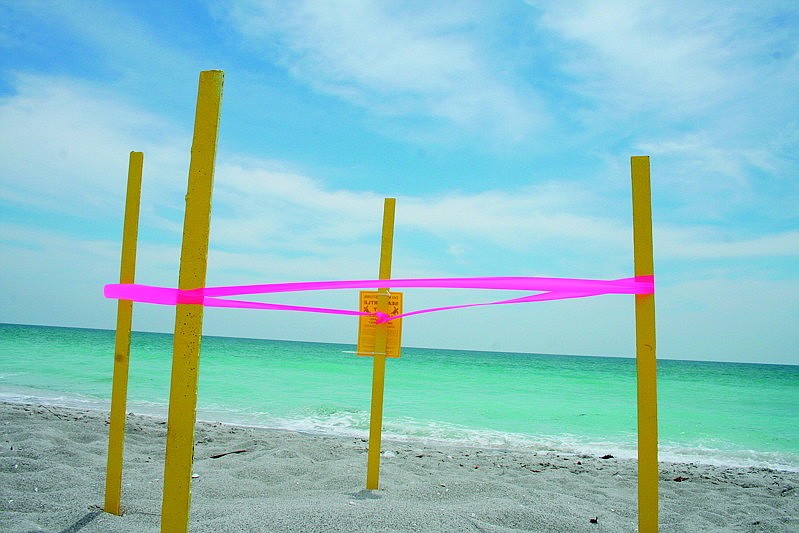- April 25, 2024
-
-
Loading

Loading

An insert in this month’s utility bill will shed some light on turtle-nesting season: Specifically, that sea turtles shouldn’t see any light.
Beginning May 1, the start of the six-month turtle-nesting season, all lights visible from the beach should be turned off or replaced with low-wavelength lighting that turtles can’t detect.
“You have to stand at the water’s edge, and any white light that is visible is a violation,” Longboat Key Code Enforcement Officer Amanda Nemoytin said.
It isn’t a matter to take lightly.
Code Enforcement will first ask residents to address a violation, however, if lighting isn’t fixed, it could result in a $250-a-day fine for noncompliance.
Noncompliance can have deadly consequences for loggerheads. According to FPL materials, turtles have an innate tendency to wander in the brightest direction away from the ocean. A single light visible from a nesting spot can misdirect hundreds of turtles, causing them to die from attacks by predators, exhaustion, drying in the morning sun or being struck by automobiles. Lights can also disorient nesting females attempting to return to the sea.
In order to avoid disorienting turtles, all outdoor lights visible from the beach should be shut off or shielded. After dark, drapes must be closed, and furniture should be removed from the beach. Beachgoers can also help sea turtles by filling in holes and knocking down sand castles that could entrap or block hatchlings, putting trash in its proper place and avoiding use of flashlights, fireworks, fishing lights and campfires on the beach.
As usual, Longboat Key Turtle Watch volunteers and Mote Marine Laboratory patrols will walk the beaches every morning in search of new nests.
If 2011’s trends continue, turtle watchers could be in for a busy season: Two nests were found on Longboat Key on the first day of turtle nesting season last year. Nests during the six-month season were up slightly on the Key with 275 nests, compared to 270 in 2010.
Researchers believe that warm water temperatures act as a cue, prompting turtles to begin nesting. Water temperatures are currently close to average levels, which could mean that turtles begin nesting right on schedule.
Fast fact
If you ever feel left in the dark in nesting season, be grateful you live on Longboat Key. Like many Florida coastal communities, nesting season spans May through October. But in Brevard, Indian River, St. Lucie, Martin, Palm Beach and Broward counties, nesting season begins March 1 — resulting in an eight-month nesting season.